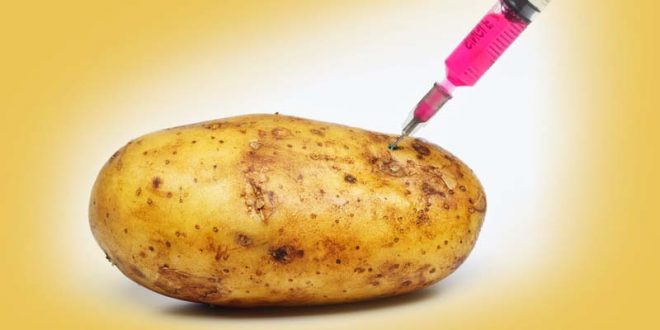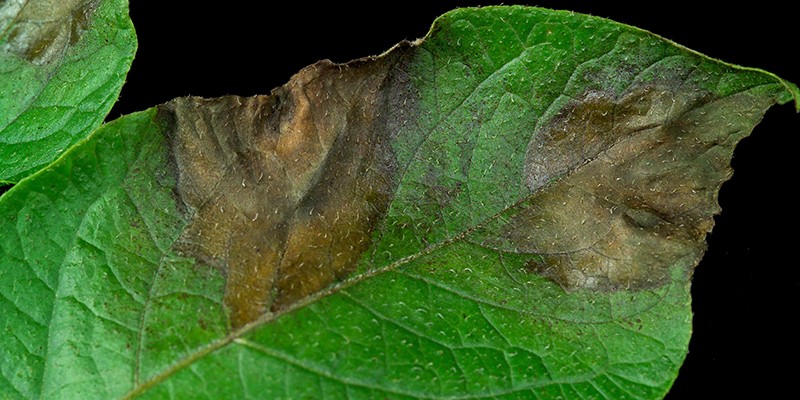Research Uncovers New Tools to Combat Pink Rot

New research by scientists in the U.S. is providing potato growers with additional tools to use in controlling pink rot, reports Capital Press.
The soil-borne disease is caused mainly by the pathogen Phytophthora erythroseptica. It infects potato roots, stolons, and tubers, and if not controlled can lead to significant losses in potato fields and in storage.
Jeff Miller, president and CEO of Miller Research near Rupert, Idaho, worked as a potato pathologist for two years at the University of Minnesota before serving in a similar position with the University of Idaho from 2001 and 2006.
He stated that pink rot is a huge problem in Idaho, primary because growers had had great success using a certain chemical to manage the disease. However, the pathogen has developed resistance to the fungicide, known as mefenoxam.
Finding a new treatment for pink rot has proven difficult. Researchers experimented with a common phosphorous-acid based fungicide that was safe but relatively weak. They soon found that it was ineffective at controlling pink rot – until once mistakenly applying about twice as much as intended. Typically, twofold use would cause problems, explained Miller, but the difference was that these phosphorous acids and phospites are very safe
The discovery meant growers who found the pathogen resisting mefenoxam in their fields could instead use a phosphite. Researchers would go on to determine ideal application rates and methods – and to also find phosophites effective at reducing pink and Late Blight while potatoes are stored, if applied when they are going into storage.
Recent work, funded by the Northwest Potato Research Consortium, addresses location-specific treatment. According to Miller, currently pink rot in the Columbia basin is still sensitive to mefenoxam, and in Idaho, it is a mixed bag: there are both fungicide-sensitive and fungicide-resistant isolates. Once growers know they have mefenoxam-resistant isolates in the field, they can switch to the phosphites.
Other new research looks at pink rot susceptibility by potato varieties. The scientists are evaluating new varieties and looking at in-season and post-harvest management, to try to see what is the most effective management package to give the most complete pink rot control approach from planting to storage.
Currently, growers are concerned about whether they should wait 48 hours to resume irrigation after applying phosphites. However, the research is still ongoing, and recommendations will be updated.
















